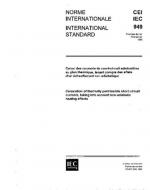|
This section contains 372 words (approx. 2 pages at 300 words per page) |
The atmospheric lapse rate describes the reduction, or lapse of air temperature that takes place with increasing altitude. Lapse rates related to changes in altitude can also be developed for other properties of the atmosphere.
In the lower regions of the atmosphere (up to altitudes of approximately 40,000 feet [12,000 m]), temperature decreases with altitude at a fairly uniform rate. Because the atmosphere is warmed by conduction from Earth's surface, this lapse or reduction in temperature normal with increasing distance from the conductive source.
Although the actual atmospheric lapse rate varies, under normal atmospheric conditions the average atmospheric lapse rate results in a temperature decrease of 3.5°F (1.94°C) per 1,000 feet (304 m) of altitude.
The measurable lapse rate is affected by the moisture content of the air (humidity). A dry lapse rate of 5.5°F (3.05°C) per 1,000 feet (304 m) is often used to calculate temperature changes in air not at 100% relative humidity. A wet lapse rate of 3°F (1.66°C) per 1,000 feet (304 m) is used to calculate the temperature changes in air that is saturated (i.e., air at 100% relative humidity). Although actual lapse rates do not strictly follow these guidelines, they present a model sufficiently accurate to predict temperate changes associated with updrafts and downdrafts. This differential lapse rate (dependent upon both difference in conductive heating and adiabatic expansion and compression) results in the formation of warm downslope winds (e.g., Chinook winds, Santa Anna winds, etc.).
The atmospheric lapse rate, combined with adiabatic cooling and heating of air related to the expansion and compression of atmospheric gases, present a unified model explaining the cooling of air as it moves aloft and the heating of air as it descends downslope.
Atmospheric stability can be measured in terms of lapse rate (i.e., the temperature differences associated with vertical movement of air). A high lapse rate indicates a greater than normal change of temperature associated with a change in altitude and is characteristic of an unstable atmosphere.
Although the atmospheric lapse rate (also known as the environmental lapse rate) is most often used to characterize temperature changes, many properties (e.g., atmospheric pressure) can also be profiled by lapse rates.
See Also
|
This section contains 372 words (approx. 2 pages at 300 words per page) |


